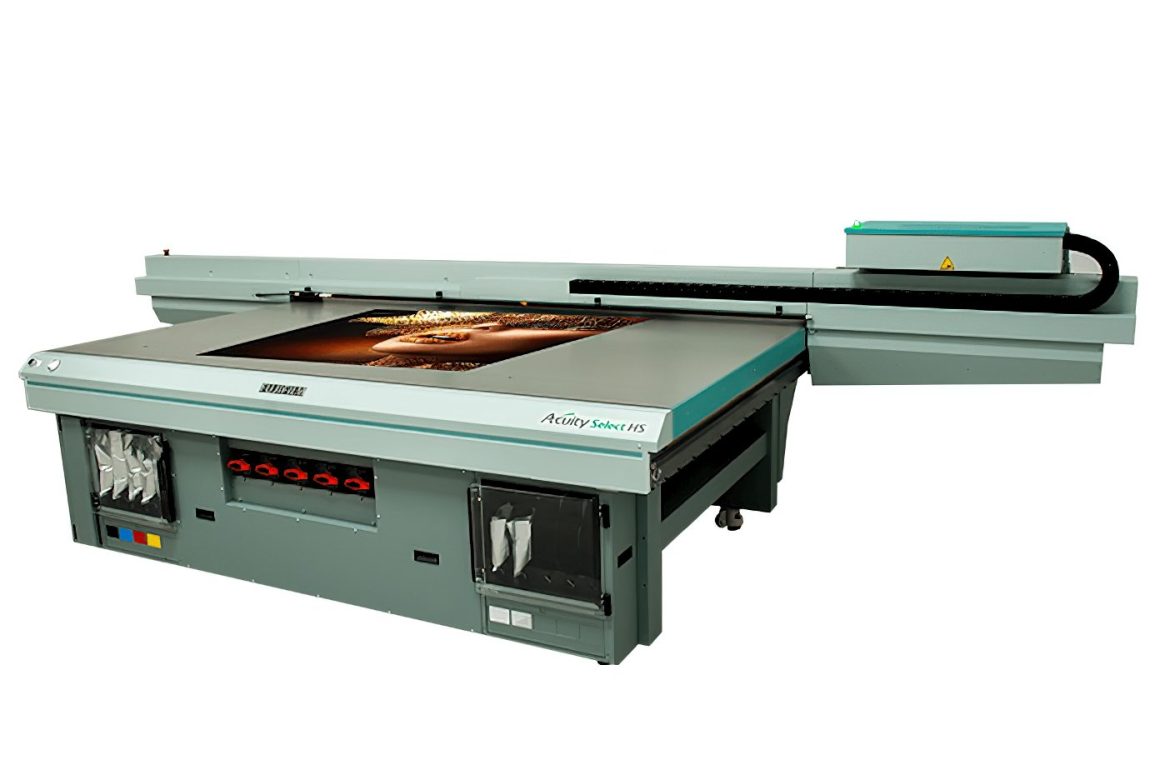As technology standards continue to advance at a rapid pace, many of us assume that the world of print has lagged far behind, especially with the rise of social media. UV digital printers are gaining popularity and high demand in today’s competitive world. These printers print on a variety of materials such as ceramic tiles, cardboard, wood, glass, stainless steel and more. Last but not least, UV printing is also possible on large substrates. In addition, these printers are environmentally friendly as well as economical and provide high productivity and improved quality.
The UV printing industry continues to flourish with many advanced technologies, one of which is the innovative trend to print directly onto rigid materials. This technique helps customers explore and experiment with different patterns, textures and colours. Today, with this ability to print directly not only on flexible substrates, but also on rigid substrates, the scope of UV printers has increased several fold.
What is UV printing?
UV printing is a type of digital printing that uses ultraviolet light to dry or cure ink as it is printed onto a surface. This technology offers direct printing capabilities on a virtually unlimited range of rigid materials, allowing for quick and easy product customisation. This is one of the reasons why UV printing is in high demand.
Cleaner, brighter, faster and more durable
Before the advent of UV printers, solvent-based inks used in the printing process had to be evaporation-dried, but special UV inks dry during the printing process when exposed to UV light. It gives a much better and cleaner finish to the print and saves a lot of time because the drying process is faster and less cumbersome. There is also no risk of air pollution affecting print quality. In addition to this benefit, UV printing is extremely cost-effective because it saves time in the first place, so more products can be printed in less time. Secondly, it does not require pre- and post-coating on the substrate, as UV drying ensures that there is no ink smearing even without these layers.
The final product comes out in vibrant colours and better gloss compared to other inks. There is no risk of chipping or fading, and the result is a print of exceptional quality. The UV curing process ensures that the liquid ink droplets are dried before they can penetrate the substrate, giving the print a smoother appearance. It eliminates the process of gluing the printed material to the substrate, as printing is done directly onto the substrate. This eliminates the risk of wrinkles, bubbles or improper bonding.
UV printing has another big advantage over solvent-based technologies: it is environmentally friendly, as it releases zero volatile organic compounds. Unlike other printing practices, UV printing requires no ventilation and less energy. UV technology offers sharper images, greater detail, a wider colour gamut and faster, safer printing.
More options for the sign industry
Apart from efficiency, UV-cured inks are less prone to weather-related changes. This makes them more important for signage, as billboards and banners are installed outdoors. UV printing has evolved over the years, and today, it has become a necessary part of the signage industry as it offers different perspectives in the design of advertisements. Several new companies have entered this industry as there are opportunities galore and a lot of innovation can be made in applications. You can choose UV print to print on billboards, point of purchase, POSM, banner ads, indoor and outdoor posters and more.
UV printers improve the quality of signage and meet advertisers’ expectations. Today’s shop windows are very different from what they were a few years ago. UV printing allows companies to go beyond ordinary signage. For example, nowadays acrylic is used on sliding doors in stores because there is an option to print directly on that material. Previously, the process of printing on a rigid substrate was very cumbersome. With UV printing directly onto rigid materials, printers have managed to save time, money and labour costs.
Advantages of UV printing
- Image clarity and colour saturation are improved as there is less chance of ink dots spreading.
- Advertising posters
- Chemical interaction with the substrate is reduced due to fast drying and low absorption properties. This opens the door to a variety of different substrates to be used. More options mean more opportunities for creative solutions. Basically, through the UV printing process, you can print on any rigid or flexible material up to 5.08 cm thick (PVC, Plexiglass, Foam, Forex, Polycarbonate, Polystyrene, Acrylic, Corrugated Cardboard, Aluminium, Wood, Stone and many other materials). This print on rigid materials is both scratch and UV resistant.
- The special UV inks used release zero volatile organic compounds, making it a greener process for our environment and a safer one.
- The scratch resistant surface makes handling, transport and installation much improved.
- Faster production times thanks to the instant curing process. Jobs can even be double-sided and it’s still a time saver. Set-up time remains the same regardless of the printing process.
- Lower costs as no additional materials and labour are needed for mounting on a second substrate. You can save a lot of money because UV printing offers a faster drying time.
- UV prints can be produced with high gloss levels or dull finishes, depending on the look required for your project.
- Installations can be easier as you now have the option to choose alternative substrates.

